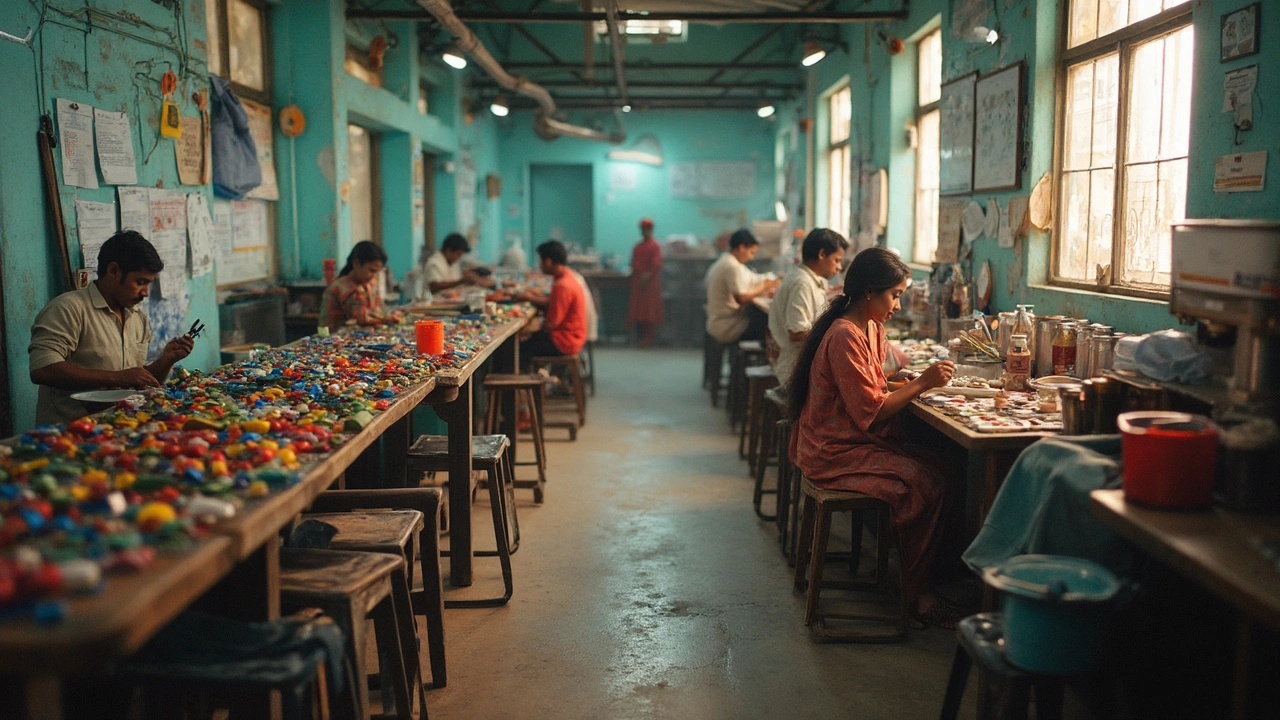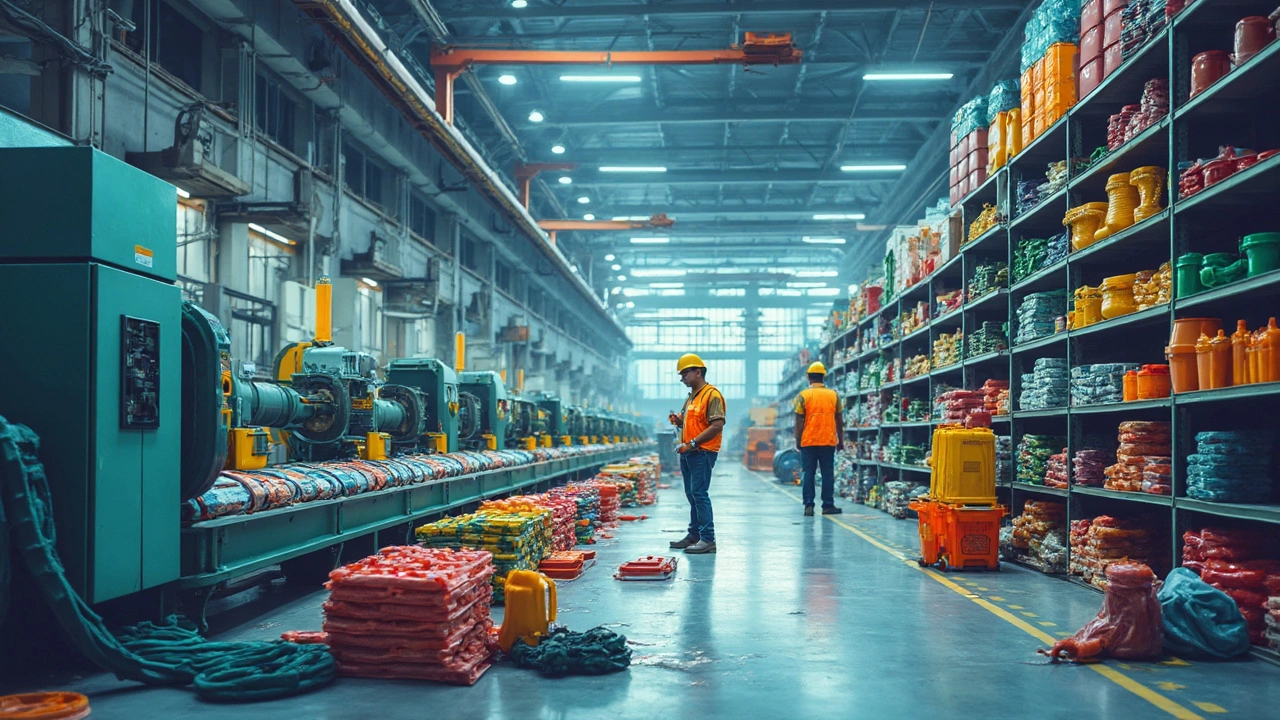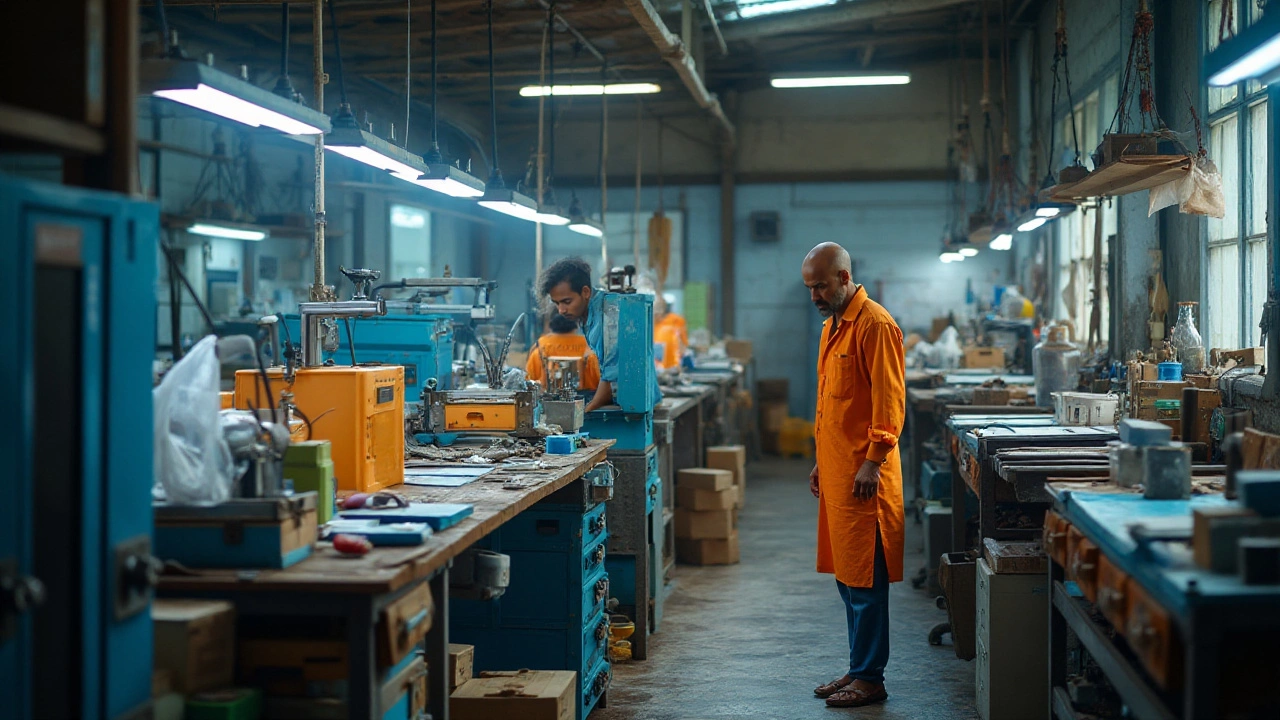Small Scale Production: The Two Main Types and What Sets Them Apart

Thinking about starting small with manufacturing? The big question is—what type of production actually fits your product? There are two main ways small businesses make stuff: discrete and process production. Most people don’t realize that everything from craft beer to phone cases gets made with these methods—each with its own tricks and challenges.
If you’ve ever wondered how a soap maker and a local gadget builder can both call it 'manufacturing' but do totally different things, you’re in the right place. We’ll dig into what sets these two apart. Spoiler: It’s not just the machines on the shop floor. It’s about what you’re making, how you organize your work, and even how you sell and ship.
Let’s clear up the differences and figure out which type makes the most sense for what you want to build—or buy.
- Getting to Know Small Scale Production
- Discrete Production: Making Things Piece by Piece
- Process Production: Mixing and Molding
- How to Choose Between the Two
- Pitfalls to Avoid and Quick Tips
Getting to Know Small Scale Production
When people talk about small scale production, they usually mean making products in smaller batches—nothing like car factories or mass-market soda plants. We're talking about stuff you make in a workshop, a small factory, or even a big garage. Small scale manufacturing keeps the team tight (often less than 50 people) and the setup simple, so changes happen fast and costs stay down.
Here’s what sets small scale production apart:
- Lower startup costs: No need to shell out millions. Most businesses get going with a few thousand dollars.
- Flexible processes: Easy to test new ideas or customize orders. Spot a trend in the market? You can react fast.
- Local supply: Most small producers work with nearby suppliers, which means fewer delays and less risk if shipping overseas gets messy.
- Hands-on: The owner usually knows the process inside-out. You might even see them running the machinery.
It’s a big and growing part of local economies. In the US, for example, small manufacturing outfits (fewer than 20 employees) made up nearly 75% of all manufacturing firms, according to the Census Bureau back in 2021.
So who fits into this world? Think candle makers, small furniture builders, craft food producers, and even electronics startups. Whether you’re making gourmet jam or 3D-printed custom parts, you’re part of the small scale production club.
Here’s a quick peek at typical features for small scale setups:
| Feature | Small Scale |
|---|---|
| Batch Size | 10-5,000 units |
| Team Size | 1-50 people |
| Investment Needed | $5,000 - $200,000 |
| Product Lines | 1-20 |
This business style lets you focus on quality, specialty, or unique products—ideal if you’re not looking to compete with giants but want loyal customers and a sustainable setup. Whether you use discrete production or process production, knowing the basics helps you decide where your idea belongs.
Discrete Production: Making Things Piece by Piece
So, what is discrete production? Picture a workshop or a small factory putting together products like toys, electronics, or even bicycles. Unlike bulk mixing or pouring, every item is made one at a time or in small batches, each with its own assembly process. That's the heart of discrete production: you see every part, and you can usually touch each piece before it becomes the final product.
Here’s the thing—discrete production is all about variety and flexibility. Say you’re making custom furniture. One customer wants blue drawers, another wants natural wood. In discrete setups, changing colors or features is no big deal. You can swap out parts, make one-off items, and give every order its own twist.
“In discrete manufacturing, you count, track, and manage every single item during and after production—unlike other forms where material just flows from one phase to the next.” — Manufacturing Insights Magazine, January 2024
If you walk into a small electronics assembly shop, you’ll spot workers with screwdrivers putting together circuit boards, then testing each one. Maybe they’ll make 30 power banks today and switch over to 10 bluetooth speakers tomorrow. This stop-and-start approach fits the world of small scale production perfectly because you’re rarely tying up big money in supplies, and you can switch products fast if demand shifts.
- Each product has its own bill of materials—think of it as an ingredients list for a recipe.
- Changes to features or designs happen quickly, sometimes even between batches.
- Defective items can be pulled and fixed before the rest are finished, so quality checks are simpler.
And here’s a stat that might surprise you: According to a 2023 report by the Small Manufacturing Alliance, 62% of new workshops in the US launched with discrete production setups because it let them sell customized products fast, without huge upfront costs.
This way of building things is all about keeping options open and costs low. If your product can be taken apart and counted, chances are you’re in the discrete production camp.

Process Production: Mixing and Molding
If you walk into a small batch soap studio or a neighborhood brewery, you’re seeing process production at work. This method focuses on transforming raw ingredients into finished products by mixing, heating, fermenting, or molding them. You don’t make individual unique items—you make a product that’s the same in every batch. Think paint, cosmetics, sauces, or even hand sanitizer.
Here’s what makes process production stand out: it’s all about recipes. Everything follows a formula, and your job is to stick to it for consistent results. In small scale setups, this usually means smaller tanks, simple mixers, and basic molds—nothing fancy or fully automated. But don’t underestimate how much you can get done with just these simple tools.
Take a soap maker, for example. They measure oils, lye, and scents, combine them at the right temperature, and pour the mix into molds. After curing, they’ve got a whole slab of the same soap, ready to be sliced and packaged. Same idea if you’re doing hot sauce—get your chili blend right, mix it with vinegar, heat, and bottle. Repeat for every batch, keeping quality consistent.
It’s easy to think process production is less flexible, but that’s not really true. You can quickly change recipes to make a new flavor or scent. It’s just that instead of making one-off items, you switch up the formula and run a new batch.
If you need some fast facts on how this looks for small scale production, check out this table. It gives you a taste of common process-made products and typical batch sizes for small producers:
| Product | Typical Batch Size | Tools Used |
|---|---|---|
| Soap | 10-40 lbs per mold | Mixers, molds, curing racks |
| Craft Beer | 1-5 barrels | Brew kettles, fermenters, bottlers |
| Sauces | 5-50 liters | Pots, blenders, bottles |
| Lotions | 10-100 bottles | Mixers, filling machines |
One tip: always track your recipe and batch times. Consistency is king in small scale production, especially if you plan to sell to shops or online. If a batch goes wrong, you’ll want to know exactly what step messed things up.
How to Choose Between the Two
Deciding between discrete production and process production isn’t just about the equipment you buy. It comes down to the kind of product you want to make, your budget, and how flexible you want to be. Here’s how you can figure it out:
- What are you making? Plain and simple: If your product is a physical item you can count out individually—like electronics, furniture, or bicycles—discrete is usually your go-to. But if you’re dealing with stuff you mix, blend, or pour (think soaps, sauces, or paint), process production is made for you.
- Volume and variety: Discrete production shines if you switch between products often—a furniture maker can jump from tables to chairs with a few tweaks. However, process production is best when you pump out lots of the same thing day after day, like lemonade or shampoo.
- Space and budget: Process setups need tanks, mixers, and sometimes specialized pipes, which can chew up space and money fast. Discrete setups are usually more compact and modular. That’s a big reason why many makerspaces and hobby manufacturers start discrete.
To put it in perspective, check out how some common small small scale production products match up:
| Product Type | Likely Method | Why? |
|---|---|---|
| Custom Jewelry | Discrete | Each piece is unique, lots of part-swapping |
| Coffee Roasting | Process | Each batch is blended and treated as a whole |
| Handmade Furniture | Discrete | Products vary, assembled from parts |
| Natural Soap | Process | Mixed, poured, then packaged in batches |
Still not sure? Here’s a quick checklist to help you choose your small scale production path:
- If you want to customize every order or mix up your product lineup, go with discrete production.
- If your goal is to create consistent batches with the same end product every time, process production is your friend.
- Your available floor space and how much cash you have for gear can tip the balance—keep those in mind before investing.
Picking the right type up front isn’t just about convenience. It can make hiring, scheduling, buying materials, and making changes way easier—or a lot harder—down the road.

Pitfalls to Avoid and Quick Tips
Diving into small scale production? It’s easy to trip over the same mistakes as lots of others. These can eat up time, money, and even kill a good idea before it gets rolling. Here’s a rundown of the common traps and some no-fuss tips to keep your operation on track.
- Misjudging Demand: People often make way too much or too little. Don’t guess. Use a waitlist, a pre-order, or chat with likely buyers first.
- Overcomplicating Processes: That fancy new machine or extra ingredient can slow things down and jack up costs. Focus on what sells, not what looks cool on paper.
- Mixing Up Production Types: Trying to use the same set-up for both discrete and process stuff? Not smart. Batch cookies aren’t made the same way as toy cars, and mixing systems adds chaos.
- Underestimating Regulations: Forgetting about safety codes, labeling rules, or quality checks can get you fined or banned from markets—especially with food, health, or electrical products.
- Ignoring Tech: There’s cheap software to track materials, orders, and sales even for tiny operations. It’s easy to outgrow a notepad or Excel sheet. Keep things digital when you can.
Want to hit the ground running instead of running into walls? Here are some quick tips that work—in real small workshops, not just in business books:
- Start Small: Pilot with one or two products first, then scale up only what’s working.
- Track Every Cost: From packing tape to electricity, keep tabs on costs so your prices actually pay you back.
- Keep Production Flexible: Choose simple tools, modular setups, or recipes you can easily adjust when demand shifts. Customization is gold in small scale production.
- Ask for Feedback, Fast: Get whatever you're making into real users’ hands as early as possible. Fix what’s broken right away—it saves hassle mid-run.
- Line Up Backup Suppliers: Sometimes your main source will flake, ship late, or suddenly jack up prices. Having a second option avoids stopping everything.
Just to bring it home, check out this simple breakdown of where beginners in small scale manufacturing often lose money:
| Area | Common Mistake | Estimated Loss (%) |
|---|---|---|
| Raw materials | Over-ordering or waste | 15-30% |
| Production downtime | Poor scheduling | 10-20% |
| Compliance | Missing paperwork | Up to 100% (fines, recalls) |
Stay aware of these pitfalls and work the tips above—that’s the game changer in small scale production.





